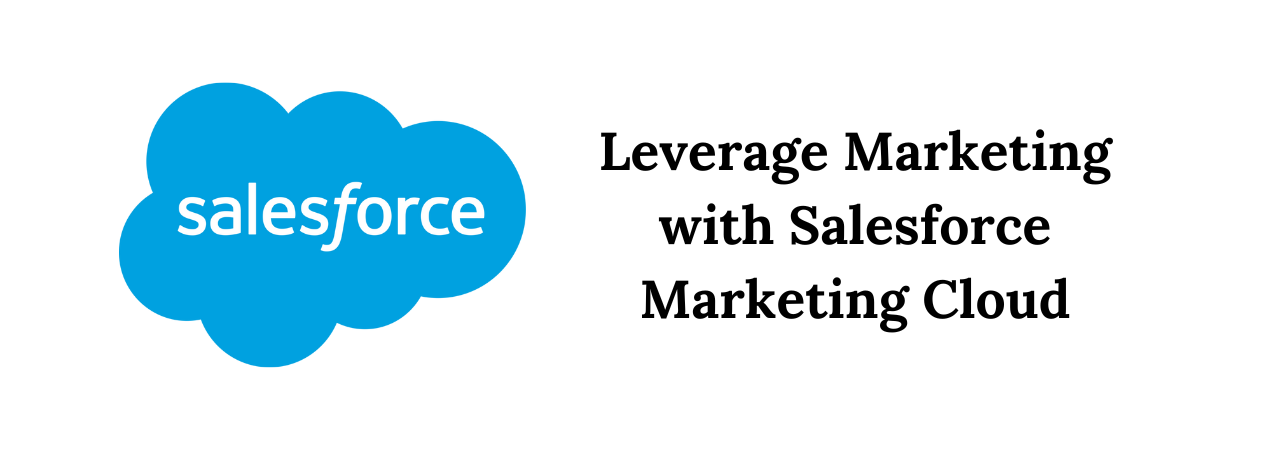
With an expected supporter base of more than 3 million users, Salesforce Marketing Cloud has become a typical component among the world’s best-performing tools—in any industry. Why is utilizing Marketing Cloud for advertising so normal?
Why not? The Salesforce Marketing Cloud is a Salesforce acquisition of a product in the past known as ExactTarget. It very well may be utilized to send messages to records and to Salesforce Campaigns and Contacts. It additionally has some capability to send SMS messages and manage social media life outreach and online marketing. It has a moderate measure of reporting capability inside Salesforce, yet know that this tracking ability makes lots of records and will utilize tons of Salesforce data storage place.
But, before we jump into best practices, we should take a look at what the Salesforce Marketing Cloud (SFMC) brings to the table. SFMC is an amazing marketing automation platform. Out of the box, it is basically a clear record that can be intended to meet an association’s particular needs. From storing complex information structures in Data Extensions to creating custom Journey Builder activities, SFMC can deal with pretty much every use case possible.
Unlike Sales Cloud, in SFMC, there are no sandboxes. A few associations approach a demo account or testing business unit. But, most SFMC experts and clients are learning and testing in a production domain. This is significant because often, SFMC Admins don’t consider that making changes in a production environment can prompt an expansion in security vulnerabilities.
What is Salesforce Marketing Cloud?
The Marketing Cloud incorporates integrated solutions for data analysis, email, mobile, customer journey management, advertising, web personalization, social media, content management, and content creation. The platform incorporates predictive analytics to help settle on choices, for example, what channel would be ideal for a given message. A part called Journey Builder encourages advertisers to tailor campaigns to clients’ conduct, needs, socioeconomic, and communication channel inclinations, which keeps clients drew in with your brand through numerous channels previously, during and after the sale.
Event-driven triggers start activities: when a client joins a dependability program, Salesforce Marketing Cloud may be activated to send a welcome message; other events could trigger information updates in the client contact record. The Marketing Cloud can be associated with Sales Cloud and Service Cloud, which empowers coordination that gives a unified experience and keeps clients from being reached independently by advertisers from various gatherings.
Why choose Salesforce Marketing Cloud?
It is one of the market leaders in the advertising cloud domain alongside different clouds like Adobe marketing cloud, Oracle marketing cloud, and IBM marketing cloud. Marketing Cloud has a total market share of 24%, second just to Adobe marketing cloud.
If you are thinking about what makes the marketing cloud stand out, at that point you should investigate the advantages given beneath:
• Marketing Cloud furnishes you with a platform to design, customize and advance customer journey.
• You can outline customer journey over numerous channels, gadgets and client life-cycle stages all in one software.
• Marketing Cloud can be incorporated with other software like Salesforce CRM, Salesforce Sales Cloud, Workfront and different applications to give further and better experiences of clients.
• Organizations like Western-Union, Aston-Martin, Vodafone, General Electric, Philips and so forth, who have a huge customer base use Salesforce Marketing Cloud to associate with their clients. Organizations that embrace these devices have a dramatic advantage, presently, however well into the future.
Features of Marketing Cloud Implementation:
Journey Builder:
To assist advertisers with customizing their associations with clients as indicated by their ongoing practices.
Contact Builder:
To assemble client information from numerous sources for having a superior handle of their behavior and different qualities
Email:
To effectively send and arrange emails based on the information and insights.
Social Studio:
To map and track social media campaigns.
Cross channel implementation:
For continuous customer experience across channels.
Content Builder:
For making smart and powerful content by means of mobile-optimized templates and simplified functionality.
Underneath we’ve shared a couple of Salesforce Campaign best practices that you should embrace if you need further and increasingly exact understanding into how much your marketing adds to sales.
Deliverability:
A frequently most overlooked metric is the deliverability rate. It tells you precisely what the number of emails is really coming to the mailboxes of clients and possibilities. This metric is an immediate impression of the performance of your campaign. High deliverability rates represent high performing campaigns. For instance, suppose you have a campaign that sent 10,000 emails and just 8,000 got conveyed. The 2,000 emails that neglected to get into the inbox are basically messages that were rarely sent. If we scale this up to 1 million messages sent, just 800,000 were conveyed. The 200,000 emails not sent can be straightforwardly converted into lost sales. In this scenario, the threshold. The objective is to guarantee that the work you put into your campaign is seen by everybody proposed to see it. Some portion of a campaign strategy is to ensure you have ideal deliverability processes in place.
Personalizing emails:
Organizations presently can gather numerous data points on each contact. This data should be utilized and used to customize emails with the goal that the messages depict an enhanced user experience. Conventional emails should be a relic of times gone by and they should reflect a more personalized client experience pushing ahead. Personalizing emails fills in as a vehicle to catch the attention of the client and supports expanded commitment. Accordingly, it improves open and CTRs.
Responsive design:
Mobile-first is a technique utilized when making emails and website pages to guarantee that they fit the screens of various gadgets consequently, all while showing the content ideally. As the dependence on mobile to view and read messages increases, having a mobile-first procedure shields you from losing significant changes because of improper formatting. Your contacts getting these emails will effortlessly have the option to explore through the emails and effectively find what they are searching for. Emails being intuitive and simple to explore through are fundamental. There is a small window opening where an email must catch the consideration of the peruser. Emails that take benefits of this can have a positive and direct effect on conversions, making this an imperative technique to adopt.
Track your success:
The first deployment of campaigns is liquid and may require certain changes in order to accomplish benchmark metrics. It is fundamental that you generally analyze your campaign performance so as to understand what worked and what can be enhanced. Inspecting the metrics can give your thoughts on what could and should be changed. For instance, if open rates are low, at that point better titles and maybe a cleaner list is areas of progress. For all your campaigns, you should be continually screen and reconsider them to discover regions that can be advanced. Based on that analysis, be certain to set up the new systems in place.
Conclusion:
Marketing Cloud Management is a developing order. If you resemble the MCM champion at most enterprises, you are simply starting to understand the expenses related to the vendors in the advertising cloud. Regardless of whether you work with Enterprise, with another supplier, or build up the procedure in-house, the way to progress is thinking about the expenses and advantages to the entire business previously permitting any advertising vendor access to your site or client information. The best way to accomplish this sort of balanced analysis is to work across divisions. The sooner teams can equitably cooperate to more readily deal with their marketing cloud, the sooner incomes, pieces of the overall industry and benefits will develop.

